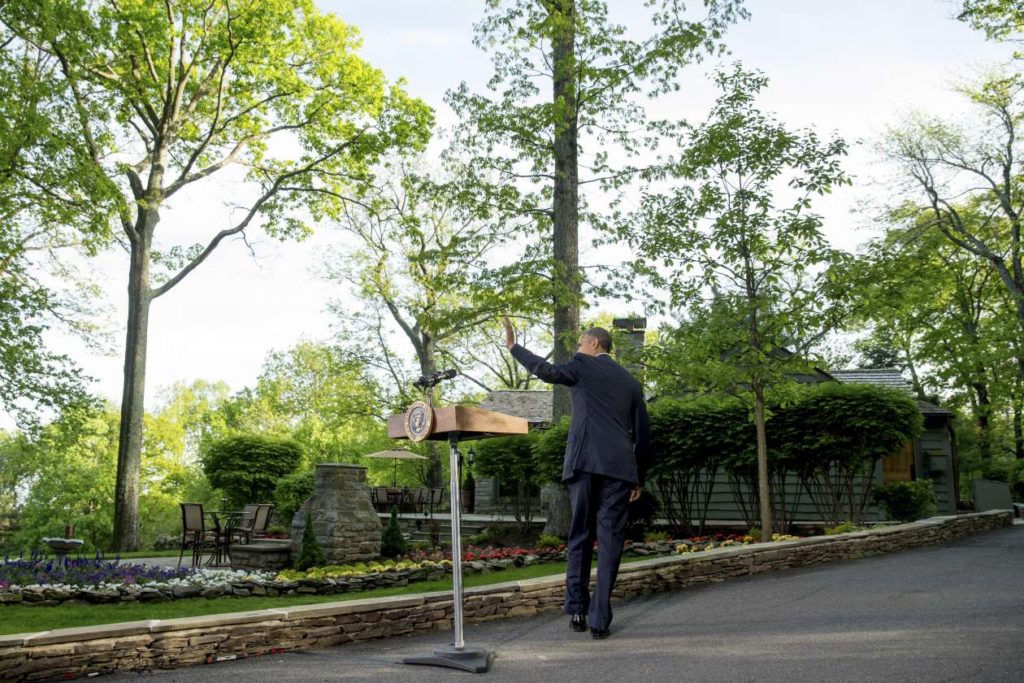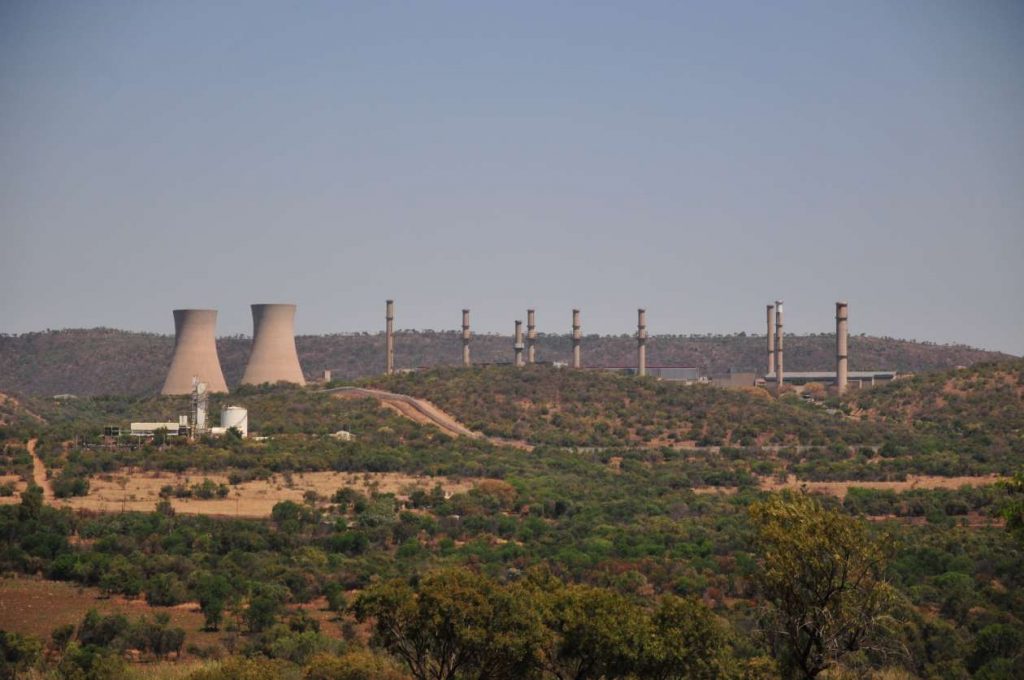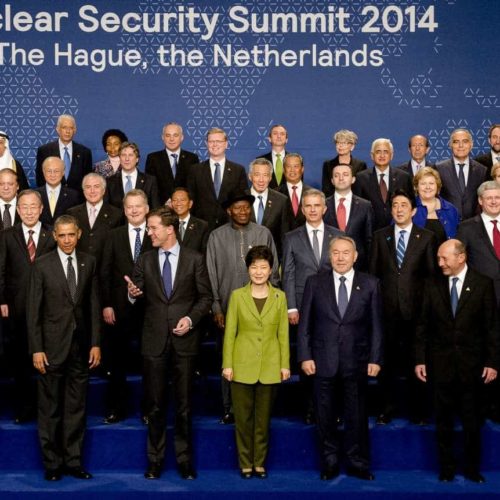Introduction
President Obama set a high foreign policy bar five months after his election by describing nuclear terrorism as “the most immediate and extreme threat to global security,” and by promising to lead an international effort to lock down all vulnerable nuclear material worldwide within four years.
In so doing, he rhetorically placed the need to bottle up loose nuclear weapons or their sparkplugs — the fissile materials that make them go bang — even higher on the list of his priorities than slowing climate change, stopping an Iranian nuclear weapon, or brokering a historic Middle East peace deal.
As the Obama administration winds down and the final U.S.-led international summit on this topic nears, it’s a logical moment to consider whether the president kept this promise. And there’s now a broad consensus that, despite some progress, the sweeping ambition he articulated not only remains unfulfilled but out of reach for the foreseeable future.
Why did the effort fall short? Certainly the challenge of ensuring nuclear explosives are not misused has been with us for decades. But why has a goal that seems so ordinary, and so sensible, and so important, and so urgent, been so hard to realize?
Who’s responsible? And how can the world make more progress, faster, before a calamitous nuclear explosion occurs — potentially the first in a populated area in more than 60 years — and makes everyone wish they had taken the issue more seriously, and acted more vigorously, and with more haste?
These were some of the questions we posed when my colleagues and I at the Center for Public Integrity embarked in 2013 on an investigation into the nuclear security outliers — the recalcitrant states, the misguided efforts, and the wasted opportunities that have undermined the decades-long U.S.-led effort to put fissile material genies back into bottles.
The scope of the threat is daunting. The world’s military and civilian nuclear programs have produced some 500 metric tons of pure plutonium, an amount that could fuel tens of thousands of nuclear weapons yet fit into a backyard shed. Countries with nuclear programs continue to add roughly 2 tons to this inventory every year. And yet it doesn’t take much to unleash a catastrophe: A grapefruit-sized bit of plutonium is enough to build a nuclear bomb.
Highly enriched uranium — the other sparkplug of a nuclear blast besides plutonium — is actually the terrorists’ explosive of choice, because it’s a bit easier to handle and use, and there’s more of it around.
Roughly 1,390 metric tons of highly-enriched uranium are still located at hundreds of military and civilian sites in two dozen countries. More grim news: A bomb’s worth could fit in an empty 5-lb sack of flour and emit so little radiation it could be carried in a backpack with little hazard to the wearer. Physicists say a sizable nuclear blast could be readily achieved by slamming two shaped chunks of it together at high speed. The majority of this inventory is in the United States and Russia, but large stocks also exist in the United Kingdom, France, India, Pakistan, China and Japan.
Altogether, the stockpiles could be used in theory to construct 20,000 uranium bombs and nearly 80,000 plutonium weapons. These are not favorable odds for humanity, as Eric Schlosser has so eloquently written about other nuclear weapons-related dangers. They’re a disaster waiting to happen. And this is not my view, or a partisan view. It’s the view of those experts who have seriously studied this issue.

A tiny fraction of the overall defense budget
President Obama certainly hasn’t been a slacker. He’s spoken powerfully about the nuclear terrorism threat before international audiences. He’s organized three summits focused on these risks, each used by his appointees to try to persuade or bludgeon other nations into taking this issue as seriously as nuclear weapons experts do.
The summits have been useful stages for a dozen countries to announce that they’ve had their last nuclear bender. They’ve told the world that they either have sent or will soon send all their nuclear materials back to Russia or to the United States.
The Obama administration, moreover, has invested more than $5 billion in nuclear security programs, according to the Nuclear Threat Initiative, a Washington nonprofit group that advocates tighter control of nuclear explosive materials. That figure includes funds given to Russia and other countries to help secure their weapons, to convert research reactors so they burn fuel composed of materials that cannot be used in weapons, and to improve the physical security and accounting of nuclear explosive materials.
Five billion dollars over seven years is not chump change, but it’s less than one percent of the amount spent on national defense during every single one of the Obama years.
Over the course of his presidency, moreover, Obama has scaled back nuclear security goals and settled for what a senior White House official once described as “the incremental nature of success,” rather than throwing his administration’s full weight behind the creation of new global security standards that independent experts say would have had a more lasting and significant impact.
In advance of the 2014 summit, the Department of Energy’s National Nuclear Security Administration, in a document labeled “Official Use Only,” said that while U.S. initiatives under Obama had made the world safer, there are still “serious threats that require urgent attention.” That May 2013 report, obtained by the Center for Public Integrity, said that terrorists were obviously still seeking nuclear weapons or the raw materials to build them.
It noted that hundreds of pounds of weapons-usable uranium are being stored at civilian sites, including in South Africa and Belarus, that experts have described as imperfectly-guarded. Scores of research reactors that use fuel composed of weapons-grade explosives are still operating, including more than 60 in Russia alone, and security precautions at these are lower than at military sites. Meanwhile, global plutonium stocks are rising, the report said, with more than 100 metric tons produced since 1998.
The internal Energy Department report called for removing or eliminating 1.1 metric tons of weapons-grade uranium and 400 kilograms — over 880 pounds — of plutonium from sites around the world. It urged the removal of all highly-enriched uranium — that is, uranium that could be fashioned into a bomb — in eight more foreign countries by 2016. It proposed that the administration undertake a better accounting of existing plutonium stocks, decide the best ways to dispose of it, and persuade other countries to balance production with consumption so that the net global stockpile will finally begin to shrink. It proposed substantially accelerating U.S. efforts to convert research reactors that use weapons-grade uranium to burn a form of uranium that cannot easily be used to fuel weapons — calling for 13 more such reactor conversions by the end of 2016.
None of these deadlines was adopted by the department, or the administration. Too difficult diplomatically, and too costly domestically, the Obama administration’s policymakers decided.
“There wasn’t much interest” in other countries, a former senior official deeply involved in the effort told us, and the political benefits for the administration turned out to be more limited than initially anticipated.
Nuclear weapons modernization gets a higher priority
Moreover, as the administration was debating how much to invest in nuclear security in 2014, “there were debates,” said Matthew Bunn, a nuclear weapons expert who formerly worked at the White House, in June of that year. “Should they provide more money for nonproliferation, or more money for weapons? It’s clear that weapons won that debate.” Proposed spending since then has well fallen short of earlier projections.
So where do we stand now?
Japan, India, Pakistan, the Netherlands, North Korea, and the United Kingdom are increasing their stocks of “weapons-usable” nuclear materials, a circumstance that only adds to the burdens of locking them safely away.
While four nuclear weapons states — France, the United Kingdom, the United States and Israel — signed a useful agreement at the 2014 U.S.-led summit entitled “Strengthening Nuclear Security Implementation,” three other key nations — Russia, China, and Pakistan — declined. (India declined then but more recently has indicated it may sign the agreement later this month.) The agreement asked for little more than a commitment to follow International Atomic Energy Agency nuclear security guidelines.
Along with India and Russia, Japan still plans to build a new energy system based on advanced plutonium-burning reactors. In Japan, the fuel would be supplied by a factory at Rokkasho that will be the world’s largest for making plutonium. It has a security system that U.S. experts consider too casual, making its imminent opening a sore point in that country’s nuclear-related discussions with Washington for at least the past decade.
South Korea has expressed a similar interest in plutonium production to supply reactor fuel, pointing explicitly to Japan as a precedent. Saudi Arabia, Egypt, Algeria, and Indonesia could also follow Japan’s example. Experts also worry about Turkey, Vietnam or Egypt.
Already, Japan has 9.3 metric tons of plutonium stored at Rokkasho and nine other sites in the island nation; about 35 tons of plutonium are stored in France and the United Kingdom. Once Rokkasho opens, the size of its stockpile could easily double in five and a half years, because by the government’s own forecast Japan is at least 20 years from completing the first of the commercial reactors designed to burn the plutonium that Rokkasho will produce.
Building such large factories for nuclear materials poses special risks. Experts say the International Atomic Energy Agency will likely be able to track 99 percent of the plutonium as it moves through the Rokkasho plant. While 99 percent might sound good, the plant’s annual output will be so high that a one-percent error rate means roughly eighty kilograms of plutonium a year could be untraceable — enough for 26 bombs. Critics worry as a result that the sizable uncertainties will open the door to diversion attempts by insiders.
India, meanwhile, completed in 2011 a reprocessing plant capable of extracting new plutonium from about 100 tons of spent fuel yearly at Tarapur, north of Mumbai. It joined three older plants that produced an estimated 3.8 to 4.6 metric tons of plutonium over the past 40 years. Another plutonium plant is under construction at Kalpakkam, south of Chennai on the Indian Ocean, which the Nuclear Threat Initiative said “will likely surpass” Tarapur “as India’s largest plutonium producer.”
India’s security precautions at such sites have generally been panned by U.S. officials, who privately rank them below those in Russia or Pakistan, and also say they see little evidence the country is doing enough to keep potential terrorists at bay. A paramilitary force responsible for guarding all of India’s nuclear sites is short-staffed, poorly trained, and ill-equipped, our reporting revealed. (Since our series appeared, a debate has ignited there over whether India should create a more specialized nuclear security force).

China, meanwhile, has criticized Japan’s plutonium plans but is considering building a new civilian plutonium plant about the size of Rokkasho at the site of two decommissioned military plutonium plants at the Jiuquan Complex in Gansu Province.
And the United States itself has not exactly set a shining example. A deal with Russia that called on each nation to get rid of 34 tons of plutonium extracted from retired weapons has foundered. Russia has proposed to feed the plutonium into reactors that can produce more of it; the United States has separately made a complete mess of its plan to burn up the plutonium in reactors, with a half-built specialized fuel factory likely to be mothballed in the wake of massive cost overruns and persistent mismanagement.
Washington still talks a good game. But in the course of our research, we discovered a simple but distressing fact: Many countries don’t take the threat of nuclear terrorism as seriously as the United States. Why? First, no government is good at dealing with low-probability, high consequence events, like a terrorist nuclear blast. It’s always easier to hope this is not a current-generation problem.
Second, other governments argue, the United States is a more likely target for resentful extremists than nations with smaller international footprints. Let Washington deal with it, they say.
Washington helped create the problem
Third, other countries also don’t bear as large a burden of history as Washington does. U.S. officials sowed the seeds of a potential terrorist-engineered disaster under a program that operated for decades with the avowed aim of helping smaller, non-nuclear weapons countries build research reactors and embrace a nuclear-powered future. Pursuing a policy that now evokes “what-were-they-possibly-thinking” wonder, the United States helped spread nuclear explosive materials around the globe.
Of the 35 countries that received an estimated 23 tons of highly-enriched uranium under this program — mostly France, Germany and Canada — only fifteen have returned all they received, with about 6.1 tons remaining at 40 locations in 20 countries, according to a May 2014 Nuclear Regulatory Commission Report.
Fourth, some nations also regard the prospect of militants building an improvised nuclear bomb as the stuff of science fiction movie; their officials simply don’t understand how easily such a weapon might be made, even by non-experts. They see themselves as unlikely targets and are reluctant to invest substantial sums to curb what they consider a distant threat. It’s not their problem, they say with considerable boldness.
Fifth, and in the most worrisome category, still others see nuclear explosive materials as a tool to heighten their international standing — a dark reputation-enhancer, if you will — or as a kind of insurance policy, something that could one day be converted into weaponry if international conditions warrant it.
Japan falls into this category, our reporting shows, as does South Africa, which has indignantly rebuffed U.S. suggestions that it give up a stockpile of nuclear explosives sufficient to fuel a half dozen bombs, now locked in a former silver vault at a nuclear research center near the South African capital.
“Inside Japan, and that is not only within the Democratic Party of Japan, there are entities who wish to be able to maintain the ability to produce Japan’s own plutonium,” Naoto Kan, the Japanese prime minister from 2010-2011, told us in an interview. “They do not say it in public, but they wish to have the capability to create nuclear weapons in case of a threat.”
Pretoria has little plausible use for its own bomb-grade (enriched) uranium besides chest-thumping, our investigation showed. It intends not only to keep it but insists on the right to make more. “Our international legally binding obligations… allow for the enrichment of uranium for peaceful purposes only, irrespective of the enrichment level,” South African president Jacob Zuma said at the 2012 nuclear security summit in Seoul.

This is the same demand made by Iran, and approved in last year’s deal with that country by the United States and five other world powers. And it’s hardly theirs alone. Although the Obama administration has tried to discourage uranium enrichment everywhere, leaders in Brazil, Argentina, Egypt, Saudi Arabia, Vietnam, Jordan, and South Korea say they see nuclear power, along with the ability to enrich uranium, as their right.
There’s no question that the Obama administration’s attention to this issue — and in particular its successful efforts to get a dozen countries to relinquish all their nuclear explosives — has helped diminish the threat that existed in 2009. But a hard obstacle remains: Other countries find it easy not to take Washington seriously, and to keep creating or holding onto nuclear explosives, while the United States insists on keeping thousands of nuclear weapons in its stocks that it depicts as a vital component of its national security.
As South Africa’s longtime nuclear ambassador and policymaker Abdul Minty memorably told us from his office in Geneva, “People who smoke can’t tell someone else not to smoke.”
Actually, they can. All the world’s nations don’t have equal standing, as we know. But Minty’s sentiment reflects the fact that many developing countries deeply resent being told to give up the same activities that major powers have long undertaken – even if doing the same thing winds up jeopardizing everyone. And after facing stout resistance in many foreign capitals, Washington’s eagerness to undertake diplomatic battles over nuclear security issues has now flagged.
The fourth U.S.-led nuclear security summit, scheduled for March 31 to April 1 in Washington, may bring some new, minor progress: Experts say a few more countries are likely to offer to give back their nuclear materials; new tasks will be given to the International Atomic Energy Agency; and new discussions will be held about the dangers posed by a diversion of nuclear materials into so-called “dirty bombs” that might spread radioactive contamination.
But there will be no shortage of urgent tasks for Obama’s successor, if he or she looks closely at the nuclear security danger and decides it warrants their attention.
Two circumstances could make a major difference, and speed up the world’s response. One is the detonation of a terrorist bomb with nuclear fuel or radiological materials in it; a classic low-probability, high-consequence event that everyone will say they didn’t see coming and they deeply regret allowing to happen. The other is probably concerted pressure from the United States, — more concerted and even more sustained pressure than the Obama administration provided.
Read more in National Security
National Security
‘The army to set our nation free’
Former Sheriff Richard Mack has a plan to roll back gun control, tax laws and land-use constraints, one defiant local law enforcement official at a time
Nuclear Waste
Obama’s nuclear security summits end with unfinished work
Progress was not sufficient, officials and experts agree


Join the conversation
Show Comments